Thinking about buying a CNC machine? Can CNC do what you want it to do? Will it be the right investment for your business? Will it be a good fit for your shop, and will it improve productivity and help your business grow? How difficult is CNC programming to learn? How much will the equipment cost? How soon can you get your new equipment up and running?
These are just some of the questions and concerns many would-be buyers of Computer Numeric Controlled (CNC) machines have when grappling with the decision of whether or not to go the CNC route, and if so what kind of equipment they should buy.
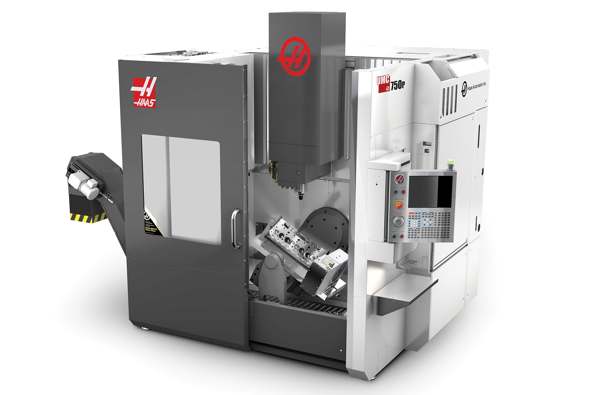
To find out what kind of questions would-be buyers of CNC shop equipment typically ask when looking at CNC equipment, we interviewed the people who make such equipment as well as some shop owners who have bought CNC equipment.
According to one equipment manufacturer, about 50 percent of potential buyers are already familiar with CNC machines and may already have one or more CNC machines in their shop. Or, they have done their homework and have a pretty good idea of what they want. The other 50 percent of potential buyers know very little about CNC machines, their capabilities, advantages and what it takes to set up and operate the equipment.
However, one thing both groups of potential buyers have in common is the knowledge that CNC is the way forward, and that it will take some type of CNC equipment to help them grow, improve efficiency, productivity and remain competitive in today’s marketplace. You can’t stay on top if you are lagging behind!
For those who are not up to speed on CNC, the best sources for information and education about CNC are the companies that make and sell CNC equipment. They are the experts and they know the capabilities of their machines. They can help you figure out what kind of CNC equipment you’ll need to perform the tasks you want to do. They are also the ones who can provide not only the initial training to get your equipment up and running, but also ongoing training to help you make the most of the features offered in their equipment so you can expand your capabilities.
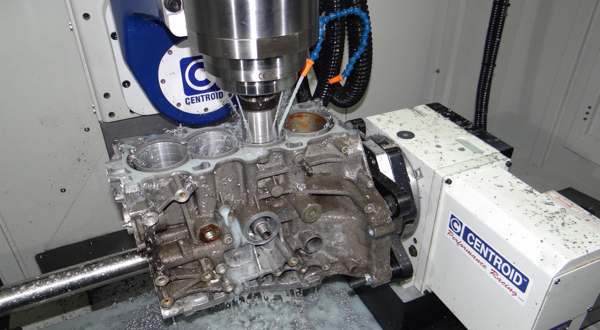
For basic shop operations like boring, surfacing, drilling, milling, etc., most of the CNC equipment that’s available for the automotive aftermarket is menu driven with relatively simple “fill-in-the-blank” programming. Certain basic jobs are often preprogrammed in the control menu so all you have to do id enter the requested information and the machine does the rest.
Industrial CNC machines are typically programmed using G-code or M-code commands entered on a keyboard or touch screen. These are special codes that tell the tooling how to move in the X, Y and Z planes. But most automotive machinists are not programmers, so many CNC machines designed for our market use “conversational programming.” You enter the basic information that tells the machine what you want it to do, things like how much you want to mill off the surface of the block, what size to bore the cylinders, etc., and the machine does the rest.
Conversational programming is much easier and faster to learn than traditional G-code and M-code programming. So with minimal training, a CNC machine can be up and running and making you money.
One shop owner we spoke with said he didn’t want to learn programming so he found and hired an experienced machinist who already knew how to operate CNC machines. He said it made the transition to CNC a whole lot easier and faster having someone on staff who was familiar with both programming and design. One of the things we wanted to do with CNC was to make custom engine blocks out of billet aluminum. He knew this would require advanced CAD/CAM skills and someone who knew how to use MasterCam software for the design work, as well as how to convert the 3-D engine design into actual operating instructions to run the CNC machine.
Although billet engine blocks or CNC head porting might be a stretch for a novice CNC operator, anything is possible once an operator gains some experience with CNC and gets some advanced training. How long does it take to become really competent with advanced CNC machining? Probably six months to a year or more say those who have done it. But for most basic jobs like boring, surfacing, etc., you can have your new CNC equipment churning out work within a couple of days.
Most CNC suppliers will provide basic on-site training when the equipment is installed, and many offer ongoing training and advanced training to accommodate their customer’s needs. Talk to your equipment supplier to find out what kind of training they offer, where it is offered and who is eligible to attend.
For those who want to delve deeper into CNC programming, check out the listing of training resources at Haas Technical Education Center website (www.htecnetwork.org). You can find schools that offer CNC training in your area. For example, Vincennes University In Vincennes, IN (vuhtec.org) offers an intensive 15-week training program in CNC programming.
WHY CNC?
One of the first questions you might have about CNC is why? What’s its advantages over doing things the “old fashioned way?”
CNC machines can do essentially almost any type of machine work that other manual machines can do. They can replace older outdated machines, or they can supplement manual equipment you already have in your shop.
The main advantage is that CNC provides various degrees of automation: fully automatic start-to-finish machining, or semi-automatic one process at a time.
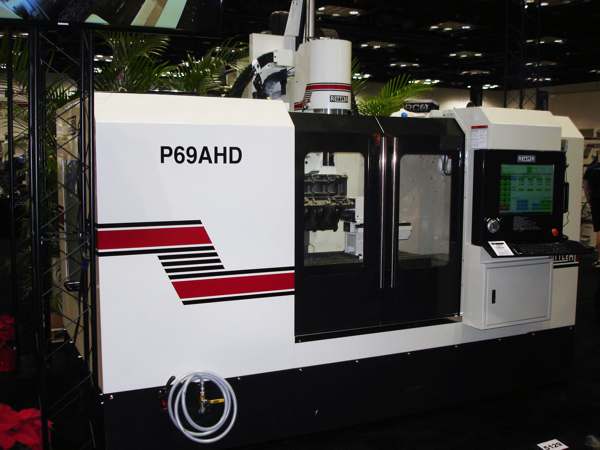
Once you mount the work piece in the CNC machine, program the operating system and start the job, you are free to walk away and do something else. In theory, this frees up labor for other jobs so each employee can be more productive with the hours they have available during the typical workday. Depending on the job, some CNC machines can be left running 24/7 until a job is finished. You can turn out the lights at the end of the day and go home while your machine is making you money while you sleep!
Another advantage is that CNC generally offers better accuracy and consistency compared to manually operated equipment. Yes, you can do high quality work a 30-year-old manual machine – provided the operator is having a good day and is paying close attention to what he is doing. But people sometimes have bad times and may be distracted by other things that are going on in a shop or their personal lives. This can lead to mistakes, sloppy work and comebacks. With CNC, the machine does the job the same way every time with the same degree of accuracy and precision (assuming it was programmed correctly to start with).
WHAT TO BUY?
Some people think the way to make the plunge into CNC is to start small and work your way up from there. Buy a basic CNC machine that can do a certain job such as boring, surfacing or whatever, then buy a more capable CNC machine with more bells and whistles later on if the need arises.
One concern you may have is that a salesman will try to sell you a more expensive CNC machine than you really need. The question you have to ask yourself is this: “Is a basic CNC machine all you will ever need, or could you use the additional features and capabilities of a more advanced machine to expand your business? It all depends on your business plan (you do have a plan, right?) and the realistic potential for growth. Wishful thinking is not a business plan. But if you think you can offer something your competitors don’t offer, maybe there’s an opportunity to win over new customers and expand your business.

Some CNC machines are available with a “modular” or “adaptable” platform. This means you can purchase options in stages to match your current needs or budget. The basic machine can be a 3, 4, or 5-axis machine and accept the same fixturing, tooling and programming. The only differences would be in the machine travels, overall machine capacity, chip handling, different coolant dispensing options, enclosures, tool changers, speed and horsepower.
Obviously, you have to size the equipment to the type of engine work you do. If you only do passenger car and light truck engines, you don’t need a machine that can handle diesel blocks and heads. On the other hand, if you do big diesel work the machine has to have the size to handle the parts.
Pay attention to the horsepower rating of the equipment. Higher horsepower electric motors generally translate into faster tooling RPMs and faster cutting speeds. A 20 or 30 percent reduction in machine time can make a big difference in how much work you can complete on any given day. The time it takes to manually set up many jobs often takes longer than the machine work itself. That’s where CNC really shines. One shop owner told us that with CNC he can complete a job in two to three hours that used to take as long as 6 to 8 hours! That’s a huge boost in productivity. So if faster is important, go with a faster machine.
The one shop we mentioned earlier started out simple with a basic dedicated CNC machine to bore cylinder blocks. When that proved to be a success, they bought a more advanced 5-axis CNC machine that could more kinds of jobs, and eventually they added a third high speed 5-axis CNC machine to turn a solid block of billet aluminum into a semi-finished engine block. All this happened over a period of less than three years. It was a planned step-by-step growth process that took their shop to a whole new level.
A DEDICATED MACHINE OR MULTI-PURPOSE UNIT?
Do you only need a dedicated machine to perform a single task such as boring or surfacing, or would it be helpful to have a fully capable machining center that can do multiple tasks? Again, it depends on the nature of the work you do, available floor space and how the equipment will fit into your shop’s workflow.
One machine that does a variety of jobs can certainly eliminate the need for several different machines while saving valuable floor space. On the other hand, if a job is in process and the CNC machine is tied up until the job is finished, it may become a bottleneck if you have other jobs that are waiting their turn in the machine. So if floor space is not an issue, many shops will have both: a multi-purpose CNC machining center as well as individual machines (CNC or manual) for certain dedicated tasks.
WHAT’S THE COST?
The cost of CNC equipment depends on its capabilities and features. How much bang you get for your buck will depend on what you buy. You can spend $60,000 or less on a basic CNC machine, or as much as $300,000 or more for a high end 5-axis fully automated CNC machining center with multiple tool holders and more bells and whistles than a do-it-all 5th generation F-35 fighter jet. Basic tooling is usually included, but additional tooling and fixturing may be needed depending on what you want to do.
According to the CNC suppliers we interviewed, about 80 percent of CNC equipment is financed. The rest is leased (5 year terms most commonly, but as many as 7 years for higher end machines). Purchases and lease payments are also eligible tax writeoffs, so don’t forget to figure those numbers in when calculating your ROI.
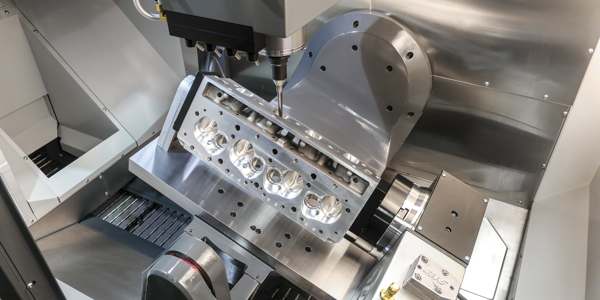
Your Return on Investment (ROI) will depend on what you charge per hour for CNC work ($100/hour is an often quoted figure), times the volume of work you do. Custom CNC fabrication work typically pays much better than standard work such as boring and surfacing. Customers who want custom work done are usually more concerned about whether or not you can make a part to their specifications than how much it costs.
Some suppliers and distributors have CNC machines in stock ready to go, and can deliver your new CNC machine in a few days to a week once you sign on the dotted line. However, some CNC machines have to be built to order, and may take 3 weeks to 3 months or even longer for delivery and installation. So plan accordingly.
WHAT GOOD IS CNC?
The short answer is the same kinds of machine work you are doing now with manual equipment, only faster, easier and with more consistency and precision. CNC also opens up a world of possibilities when it comes to custom work and even non-automotive work.
One of the questions we asked shop owners who had bought CNC equipment was what kind of jobs were they using their equipment for? Over half of those we asked said they were using their CNC machines for traditional engine work as well as non-automotive work. For some, it was almost a 50/50 split. Some were using their CNC equipment to machine oil well pumps, to make custom motorcycle parts, marine parts, auto body and suspension parts, even components for guns!
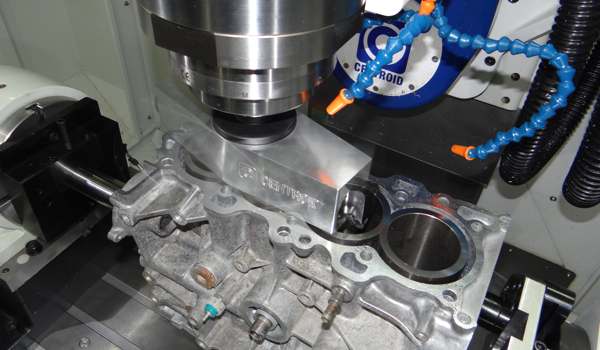
ANY PROBLEMS?
What happens if you run into a problem with your CNC equipment? Good customer support is an absolute must for a CNC machine.
So too is reliability. Most CNC machines will perform reliably for many years as long as you follow the equipment manufacturer’s recommendations for maintenance (which is minimal in most cases).
Be sure to ask about the warranty, what is covered and what is not so there are no surprises later.













